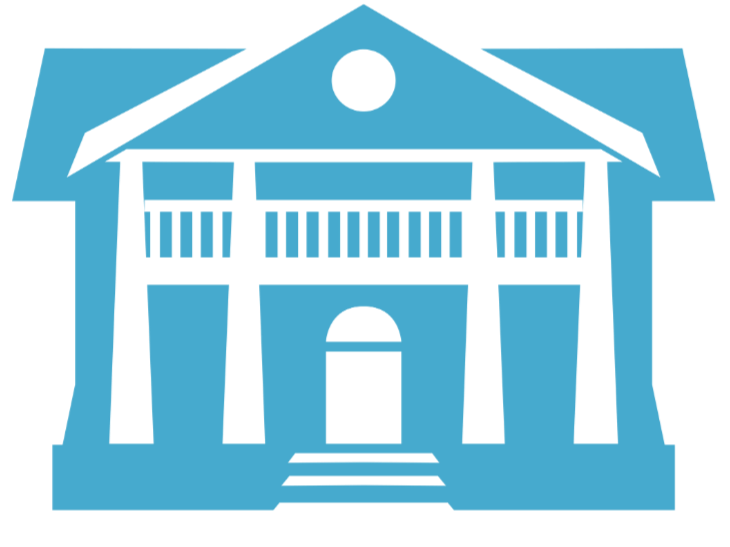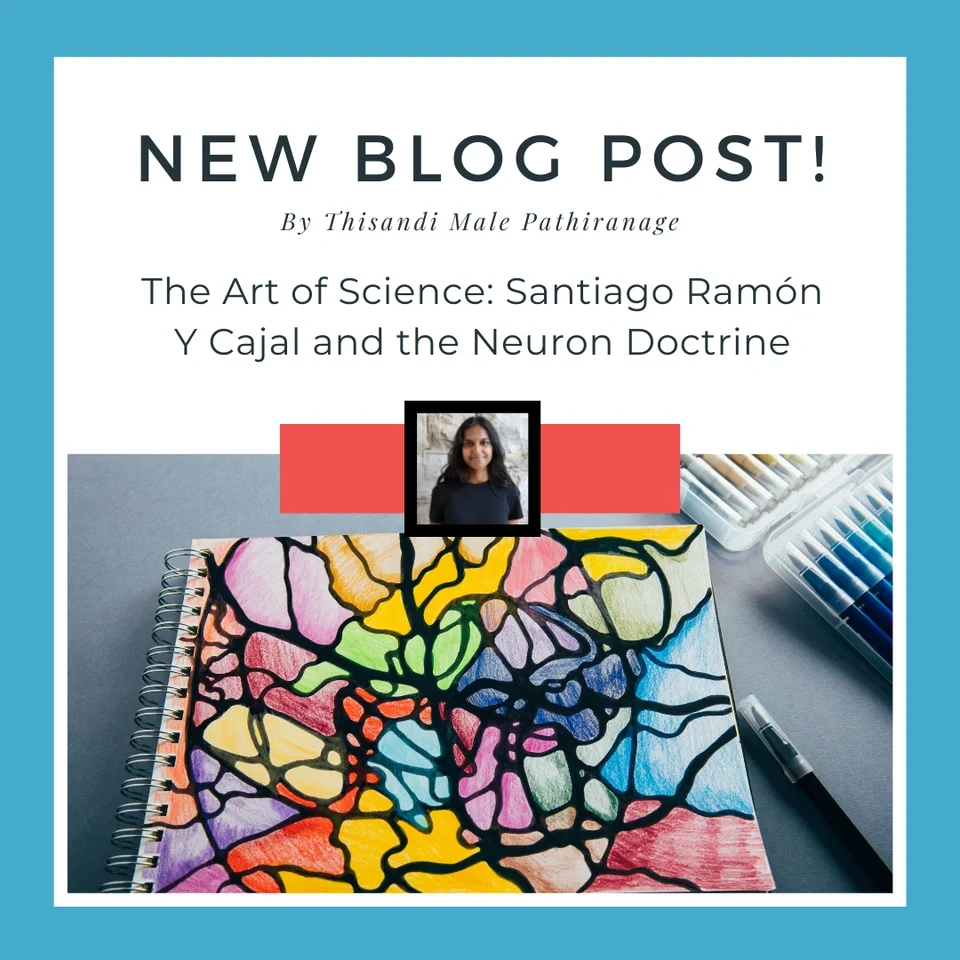The Art of Science: Santiago Ramón Y Cajal and the Neuron Doctrine
A flower garden with delicate forms. Elegant and luxurious trees. Mysterious butterflies.
These are the words of Santiago Ramón Y Cajal, the father of modern neuroscience. The subject of his poetic musings is none other than the lush landscape of the human brain. Gray matter in the central nervous system resembles a flower garden with delicate forms. Cerebellar Purkinje cells with their multitude of branching dendritic spines are likened to elegant and luxurious trees. Neurons, the fundamental unit of the nervous system, are sweetly called mysterious butterflies of the human soul.
Santiago Ramón Y Cajal’s scientific discoveries were monumental in the field of neuroscience, and his drawings are stunningly intricate. He maintained a balance between technical mastery and abstract thinking in both his scientific and artistic pursuits.
Figure 1. A portrait of Spanish neuroscientist, histologist, and researcher Santiago Ramón Y Cajal, the father of modern neuroscience. Public domain.
Let’s delve into Cajal's compelling career and the emergence of the neuron doctrine.
In 1839, German scientists Theodor Schwann and Matthias Jakob Schleiden proposed a significant biological idea. They founded the cell theory, stating that cells are the “elementary particles of organisms.” The cell theory was well-established in the 19th century, and many scientists believed that cells were in fact the fundamental units of tissues and organs. However, there seemed to be one exception to this theory: the nervous system. For the nervous system, 19th century scientists believed in the reticular theory. The idea was that all components of the nervous system, including the brain, consisted of one continuous maze-like network of fibers.
Prominent Italian scientist Camillo Golgi was a firm believer in the reticular theory. Golgi’s deep convictions about the reticular theory only grew stronger with his research observations.
Figure 2. A portrait of Italian scientist Camillo Golgi, a major proponent of the reticular theory in neuroscience. Public domain.
In 1873, Golgi’s remarkable discovery of the black reaction technique set the dominoes in motion, inciting the chain of events that would transform the study of neuroanatomy. This was during a period that placed great importance on histology. Scientists stained bodily tissues with chemicals in order for cells to be visible under a light microscope. Prior to Golgi’s technique, it was impossible to examine individual neurons in detail under a microscope at the time.
Figure 3. An example of a metal light microscope circa 1870 to 1900. Museum of Health Care in Kingston 997001624.
Golgi spent several years experimenting with a variety of stains and dyes. Through several trials and errors, he finally found what he was looking for. Golgi’s newfound “black reaction” allowed for the silhouettes of nerve cells, stained like ink blots, to stand out distinctly against their surroundings. With tissues absorbing potassium dichromate and silver nitrate, the distinct parts of an individual neuron were highlighted for the very first time. Axons, dendrites, and cell bodies were made starkly visible. Golgi used his findings from the black reaction technique in order to prove the perceived legitimacy of the reticular theory.
Figure 4. An example of a cell stained by the black reaction technique, later coined the Golgi method. ScienceDirect.
Santiago Ramón Y Cajal caught wind of Golgi’s staining method and took a great liking to it. He began implementing it in his own histological investigations. Cajal dedicated countless hours persistently mapping the brain, a cartographer of neuroanatomy, peering through microscopes to examine these tiny cells. In order to make the process easier, Cajal chose to study embryonic tissue. Neural tissues of younger specimens were easier to discern with their simple neurological structures, in comparison to the complex adult specimens that were usually inspected.
Figure 5. One of Cajal’s many drawings. This one is a part of the spinal cord of a chick embryo. Elisa Tamariz.
Expertly hand-cutting delicate tissue sections and analyzing several prepared embryo samples, Cajal eventually came to a pivotal truth. In 1888, Cajal posited that the nervous system was not in fact a large continuous network of fibers. Instead, Cajal had found that neurons have spaces between them, communicating not through continuity but through contact, through synapses and gap junctions. Through his meticulous studies, Cajal developed the neuron doctrine, providing evidence to disprove the reticular theory. Cajal expanded upon the doctrine using the concepts of neurogenesis and neuroplasticity, and the processes of degeneration and regeneration.
In 1906, Cajal and Golgi both received the prestigious Nobel Prize in physiology or medicine for their contributions to the field of neuroscience. It is ironic, however, that the two vehemently opposed each other in terms of their beliefs. Golgi, despite Cajal’s mounting evidence against the outdated reticular theory, remained steadfast in his reasoning. In the 20th century, electron microscopy confirmed that Cajal’s pioneering neuron doctrine had prevailed, standing the test of time. However, Cajal could not have accomplished it without Golgi’s black reaction technique.
Cajal is not only revered for his scientific discoveries, but also his artistic prowess. He created several painstaking drawings of his identifications through the microscope. Cajal’s incredible renditions of neural architecture are considered works of art even in the modern day. Several of the neuroscientist’s pieces were displayed within a traveling art exhibition titled “The Beautiful Brain,” attesting to their value.
Figure 6. Cajal’s drawing of cells in the retina, from 1899. Cajal Institute, Madrid
Cajal’s artistic endeavors provide a glimpse into his mind. His drawings are subjective, conveying the sights of his trained eye, yet unmistakably precise. Cajal’s metaphorical language when describing the brain also demonstrates his abstract nature in addition to his methodical traits. Perhaps this interesting blend contributed to Cajal’s unique insight and understanding of the brain. More than a century later, Santiago Ramón Y Cajal’s phenomenal ink drawings and his revolutionary neuron doctrine continue to astound.
References
Alberts, Bruce M. “Cell Theory | Biology.” Encyclopedia Britannica, 23 June 2022, www.britannica.com/science/cell-theory. Accessed 21 Aug. 2024.
Ashworth, William . “Camillo Golgi.” The Linda Hall Library, 2022, www.lindahall.org/about/news/scientist-of-the-day/camillo-golgi/. Accessed 21 Aug. 2024.
Brazier, Yvette. “Neuroscience: Overview, History, Major Branches.” Www.medicalnewstoday.com, 26 June 2018, www.medicalnewstoday.com/articles/248680#history. Accessed 21 Aug. 2024.
Cimino, G. “Reticular Theory versus Neuron Theory in the Work of Camillo Golgi.” Physis; Rivista Internazionale Di Storia Della Scienza, vol. 36, no. 2, 1999, pp. 431–472, pubmed.ncbi.nlm.nih.gov/11640243/. Accessed 21 Aug. 2024.
CSIC. “The Cajal Legacy.” Consejo Superior de Investigaciones Científicas, 3 June 2019, www.csic.es/en/cajal-legacy. Accessed 21 Aug. 2024.
de Castro, Fernando. “Cajal and the Spanish Neurological School: Neuroscience Would Have Been a Different Story without Them.” Frontiersin.org, 2019, www.frontiersin.org/journals/cellular-neuroscience. Accessed 21 Aug. 2024.
Ehrlich, Benjamin. “The Father of Modern Neuroscience Discovered the Basic Unit of the Nervous System.” Scientific American, 1 Apr. 2022, www.scientificamerican.com/article/the-father-of-modern-neuroscience-discovered-the-basic-unit-of-the-nervous-system/, https://doi.org/10.1038/scientificamerican0422-50. Accessed 21 Aug. 2024.
Glickstein, Mitch. “Golgi and Cajal: The Neuron Doctrine and the 100th Anniversary of the 1906 Nobel Prize.” Current Biology, vol. 16, no. 5, Mar. 2006, pp. R147–R151, https://doi.org/10.1016/j.cub.2006.02.053.
Grant, Gunnar. “How the 1906 Nobel Prize in Physiology or Medicine Was Shared between Golgi and Cajal.” Brain Research Reviews, vol. 55, no. 2, Oct. 2007, pp. 490–498, https://doi.org/10.1016/j.brainresrev.2006.11.004. Accessed 21 Aug. 2024.
Javier DeFelipe. “Cajal's Butterflies of the Soul.” OUPblog, 9 Nov. 2013, blog.oup.com/2013/11/cajal-butterflies-of-the-soul-cerebral-cortex/. Accessed 21 Aug. 2024.
Mishqat, Isra. “The Neuron Doctrine (1860-1895) | the Embryo Project Encyclopedia.” Embryo.asu.edu, 15 June 2017, embryo.asu.edu/pages/neuron-doctrine-1860-1895. Accessed 21 Aug. 2024.
Reticular Theory. Elsevier, 2018, www.sciencedirect.com/topics/veterinary-science-and-veterinary-medicine/reticular-theory#:~:text=Proposed%20by%20Camillo%20Golgi%20in. Accessed 21 Aug. 2024.
Shepherd, G.M. “Neuron Doctrine: Historical Background.” Elsevier EBooks, 1 Jan. 2009, pp. 691–695, https://doi.org/10.1016/b978-008045046-9.00988-8. Accessed 21 Aug. 2024.
Smith, Roberta. “A Deep Dive into the Brain, Hand-Drawn by the Father of Neuroscience.” The New York Times, 18 Jan. 2018, www.nytimes.com/2018/01/18/arts/design/brain-neuroscience-santiago-ramon-y-cajal-grey-gallery.html. Accessed 21 Aug. 2024.
Sparks, Tori. “Santiago Ramón Y Cajal, the Father of Neuroscience.” (Barcelona-Metropolitan.com), 19 Feb. 2024, www.barcelona-metropolitan.com/features/history/who-was-santiago-ramon-y-cajal/. Accessed 21 Aug. 2024.
About The Author:
Thisandi Male Pathiranage is a third year of Psychology with a Minor in Art History at Queen’s University. She enjoys creating digital art, playing the guitar, and going down Wikipedia rabbit holes.


